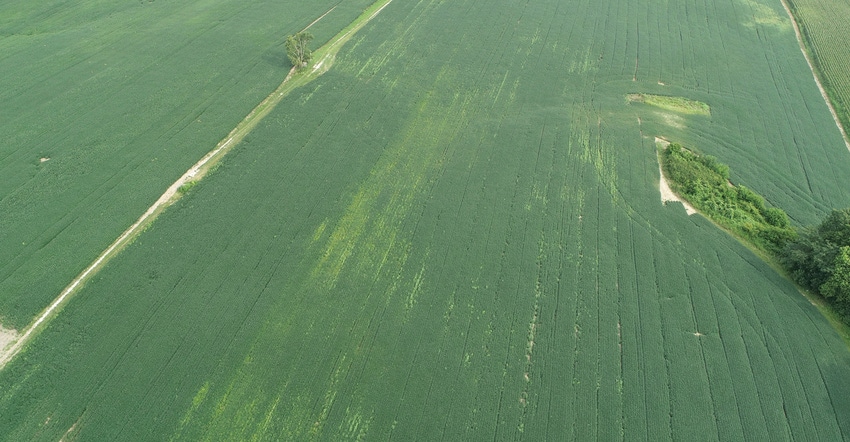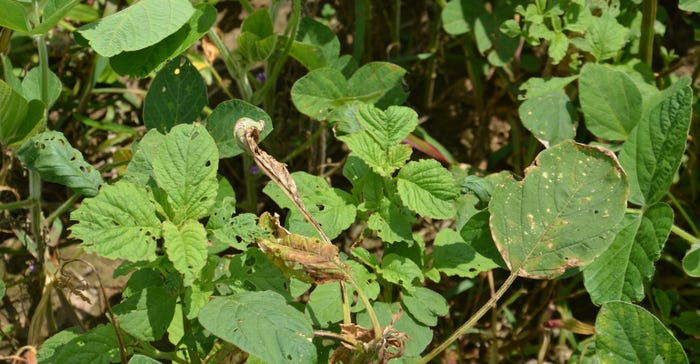
The Soybean Watch ’21 field is relatively weed-free, except for some issues with volunteer corn. However, Steve Gauck has flown over other fields in Indiana with his drone in August and picked up weed problems not so visible from the road.
Gauck, a regional agronomy manager for Beck’s, sponsor of Soybean Watch ’21, earned his Federal Aviation Administration pilot’s certificate early on. He maintains it so he can fly fields for customers who want to track patterns that aren’t easily picked up by driving by. Some of the patterns aren’t apparent from ground level, even if you walk a field — even a soybean field.
Related: How to tell if fungicide worked on soybeans
One of the fields Gauck flew over recently showed a distinct pattern of weeds breaking through coverage in early August. “The streaks stand out because weeds tend to be a lighter color than soybean plants, especially if nitrogen nodules have worked well and soybeans are in good condition,” he says. “If we go lower, we can often get a pretty good handle on what weed is causing problems in a particular field.”
Weed pressure
Canada thistle patches have a distinctive pattern from the air and are easy to positively identify if you fly lower over the crop, he adds. Giant ragweed patches are also relatively easy to spot and identify from aerial photographs.
In the field shown in the aerial photo above, Gauck suspected the weed outbreaks coming through were waterhemp plants, although he couldn’t tell for sure without ground-truthing the field. Since someone had checked the field after it was sprayed postemergence earlier in the season and noted waterhemp trying to regrow after the application, that further led him to believe waterhemp was probably showing up in the aerial photo.

These waterhemp plants were trying to survive and regrow after being sprayed with a postemergence herbicide. This photo was taken in June. The aerial photograph is of the same field, taken in August, showing weed escapes.
Waterhemp is tough, and if you don’t control it completely the first time, it will regrow, even if the herbicide application knocked it back, Gauck says. It’s also one that can germinate and break through later in the season, even if escapes from an early pass didn’t regrow.
“It’s a tough weed to control. Plus, if it goes to seed, it can produce tons of seeds per plant,” he says. “Even if the plant regrew after surviving an early spray application, it can still produce a large quantity of seed before harvest, in some cases.”
Tracking weeds, jumping on them early and preventing competition with soybeans is crucial in giving beans a chance to reach their yield potential, Gauck concludes.
About the Author(s)
You May Also Like




